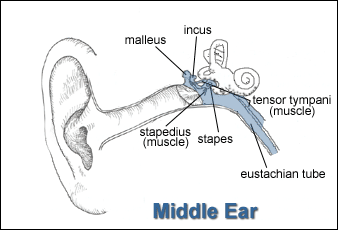Occupational Noise Exposure
Overview

The Center for Disease Control (CDC) estimates that 22 million workers are exposed to potentially damaging noise at work each year. Whether you work at a sports venue, on a tarmac, or operate a jackhammer—hearing loss is preventable.
Know Your Workplace Noise Levels!
If you need to raise your voice to speak to someone 3 feet away, noise levels might be over 85 decibels. Several sound-measuring instruments are available to measure the noise levels in a workspace. These include sound level meters, noise dosimeters, and octave band analyzers.
Noise may be a problem in your workplace if you:
- Hear ringing or humming in your ears when you leave work.
- Have to shout to be heard by a coworker an arm's length away.
- Experience temporary hearing loss when leaving work.
The National Institute for Occupational Safety and Health (NIOSH) Sound Level Meter App is one tool available to the public to download on mobile iOS devices that measures sound levels in the workplace and provides noise exposure parameters to help reduce occupational noise-induced hearing loss.
Standards
OSHA requires employers to implement a hearing conservation program when noise exposure is at or above 85 decibels averaged over 8 working hours, or an 8-hour time-weighted average (TWA). Hearing conservation programs strive to prevent initial occupational hearing loss, preserve and protect remaining hearing, and equip workers with the knowledge and hearing protection devices necessary to safeguard themselves.
Health Effects
Exposure to loud noise kills the nerve endings in our inner ear. More exposure will result in more dead nerve endings. The result is permanent hearing loss that cannot be corrected through surgery or with medicine. Noise-induced hearing loss limits your ability to hear high frequency sounds and understand speech, which seriously impairs your ability to communicate. Hearing aids may help, but they do not restore your hearing to normal.
Exposure & Controls
Ways to control worker exposure to excessive noise and prevent hearing loss include using quieter machines, isolating the noise source, limiting worker exposure, or using use effective protective equipment.
Hearing Conservation Program
Under OSHA’s Noise Standard, the employer must reduce noise exposure through engineering controls, administrative controls, or Hearing Protection Devices (HPDs) to attenuate the occupational noise received by the employee’s ears to within levels specified in Table G-16 and Table G-16A of 29 CFR 1910.95(b)(1).
Hearing Loss in Construction
Noise and hearing conservation is addressed in specific standards for Construction. Provides information related to noise in construction including OSHA's noise construction regulations, national consensus standards and recommendations from other professional organizations, health effects and general resources.
Additional Resources
Additional information about occupational hearing loss and aid in addressing noise challenges in the workplace.










